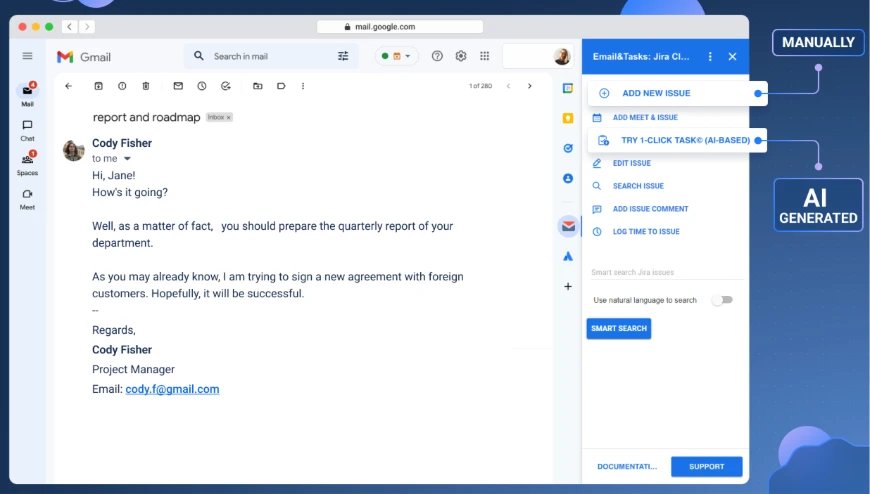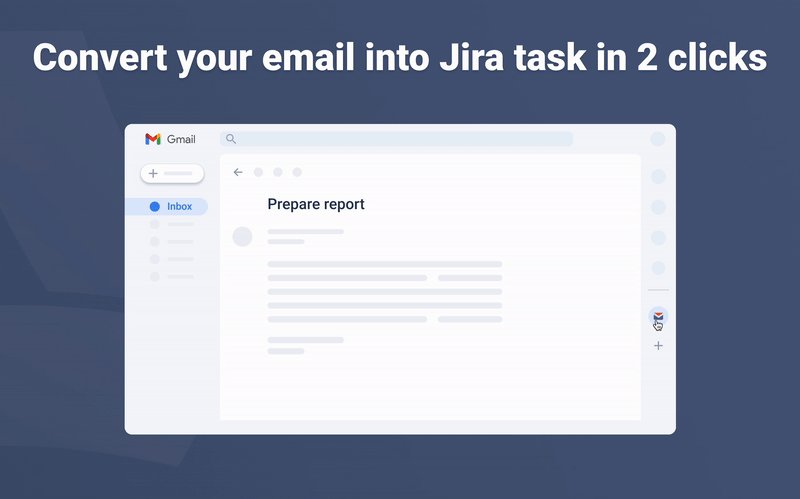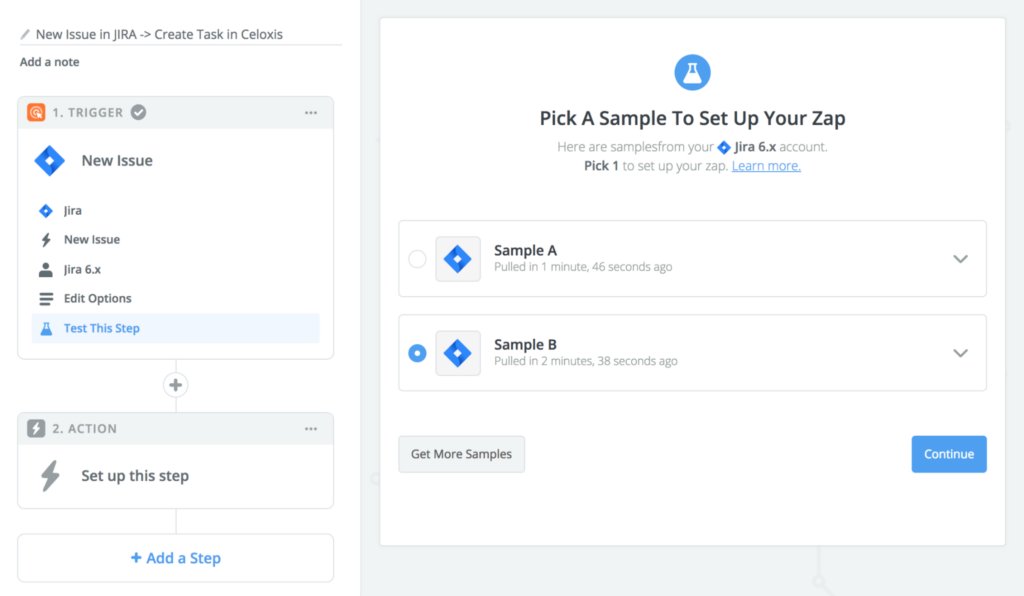How to Integrate Jira with Gmail: A Step-by-Step Guide

Table of contents
Jira is a powerful tool that helps you manage projects and tasks – be it a customer query or a marketing campaign – end to end. But more often than not, teams end up constantly toggling between their inboxes and Jira – in order to update tasks and track progress. This can get quite overwhelming, especially when there are multiple stakeholders involved.
But, there’s a workaround. You can integrate Jira with Gmail to turn emails into Jira tickets right from your inbox. This integration lets you track and manage tickets without switching between tools, keeping everything in one place and saving you valuable time.
In this guide, I’ll guide you through three effective ways to connect Jira with Gmail. These include:
- Using the ‘Jira Cloud for Gmail’ add-on
- Setting up email notifications
- Leveraging Hiver to link Jira and Gmail directly
Let’s dive into each method and see how you can simplify project management with a smooth Gmail-Jira setup.
Table of Contents
- Why integrate Jira with Gmail?
- Prerequisites for Jira-Gmail integration
- Methods to Integrate Jira with Gmail
- Integrate Jira + Gmail using Hiver
- FAQs (Frequently Asked Questions)
- Make the Most of Jira Integration with Gmail for Seamless Task Management
Why integrate Jira with Gmail?
Let’s say you’re checking your inbox and you get an email about a bug that needs fixing or a feature request from a client. If you want to transfer this to Jira and track it there, you’d have to open the software and copy+paste all the details from the email to create a new ‘issue’. This process can be a bit of a hassle and take up a lot of time.
But by integrating Jira with Gmail, you can skip these extra steps. You can turn that email directly into a Jira issue without leaving your inbox. This makes it easier to keep track of tasks and ensures that nothing slips through the cracks.
Here are some compelling reasons to consider this integration:
- Instant task creation: Quickly turn emails into actionable tasks in Jira without having to switch apps. This saves you time and keeps your workflow smooth.
- Less room for error: By directly converting emails into tickets, you minimize the risk of missing out important details or making mistakes when transferring information.
- Centralized communication: Keep all project-related discussions and tasks in one place. This makes it easier for you and your team to track progress and updates.
- Easy access to attachments: Any files or documents included in the email can be attached to the Jira ticket automatically, ensuring everything you need is in one place.
- Team collaboration: By integrating Gmail with Jira, everyone stays on the same page. Team members can easily keep track of all responses sent on the same thread, leading to more visibility on what’s happening on every issue.
- Increased focus on tasks: With lesser back and forth between tabs, you can dedicate more time to completing your work rather than doing mundane tasks like copy+pasting information.
Prerequisites for Jira-Gmail integration
To integrate Jira with Gmail, there are a few prerequisites you’ll need to meet. Let’s take a look at what they are.
1. Jira Account
You must have an active Jira account. This could be for Jira Software, Jira Service Management, or any other version that supports the integration.
2. Gmail Account
You’ll need a Gmail account. This is where you’ll be pulling emails from to create tasks in Jira.
3. Permissions
Make sure you have the necessary permissions in both Jira and Gmail:
- In Jira, you should have permission to create issues.
- In Gmail, ensure that your account settings allow for third-party integrations.
4. OAuth 2.0 Configuration
Since both Google and Microsoft have moved away from basic authentication, you need to configure OAuth 2.0 for your Gmail account. This involves:
- Registering your application in the Google API Console.
- Setting up the necessary permissions for https://mail.google.com/ to allow Jira to access your Gmail.
5. Browser Compatibility
For the best experience, use a compatible web browser like Chrome or Edge as the integration works smoothly with these platforms.
6. Base URL Configuration
Make sure that your Jira instance is running over HTTPS, and that the base URL is correctly configured in your Jira settings. This is important for the OAuth setup and redirect URLs.
7. Open Ports
Make sure that port 443 (for HTTPS) and the IMAP or POP ports (depending on your connection method) are open for outgoing connections.
Methods to Integrate Jira with Gmail
Integrating Jira with Gmail can streamline your workflow and improve task management. Here are the main methods to set up this integration, along with detailed steps for each:
1. Using the Email&Tasks Add-on
This is one of the simplest ways to integrate Jira with Gmail. Here’s how to do it:
- Install the Add-on: Go to the Google Workspace Marketplace and search for Email&Tasks: Jira Cloud for Gmail. Install it.
- Connect your accounts: After installation, open Gmail. You’ll see an option to connect your Jira account. Sign in and grant the necessary permissions.
- Create Jira issues: You can now convert emails into Jira tickets directly from your inbox. The add-on uses AI to auto-fill fields like summary and description based on the email content.
Additional features: You can attach files, log time, and add comments to existing issues without leaving Gmail.
2. Using Google to Jira (GTJ) Add-on
Another effective option is the Google to Jira (GTJ) add-on:
- Installation: Similar to Email&Tasks, find GTJ in the Google Workspace Marketplace and install it.
- Setup process: After installation, link your Gmail account with your Jira account by following the prompts.
- Create issues from emails: This add-on allows you to create Jira tasks directly from your emails and even log work to Jira tickets based on calendar events.
- Attachments and comments: You can upload attachments from Google Drive to Jira and add comments to tickets direct from the email thread.
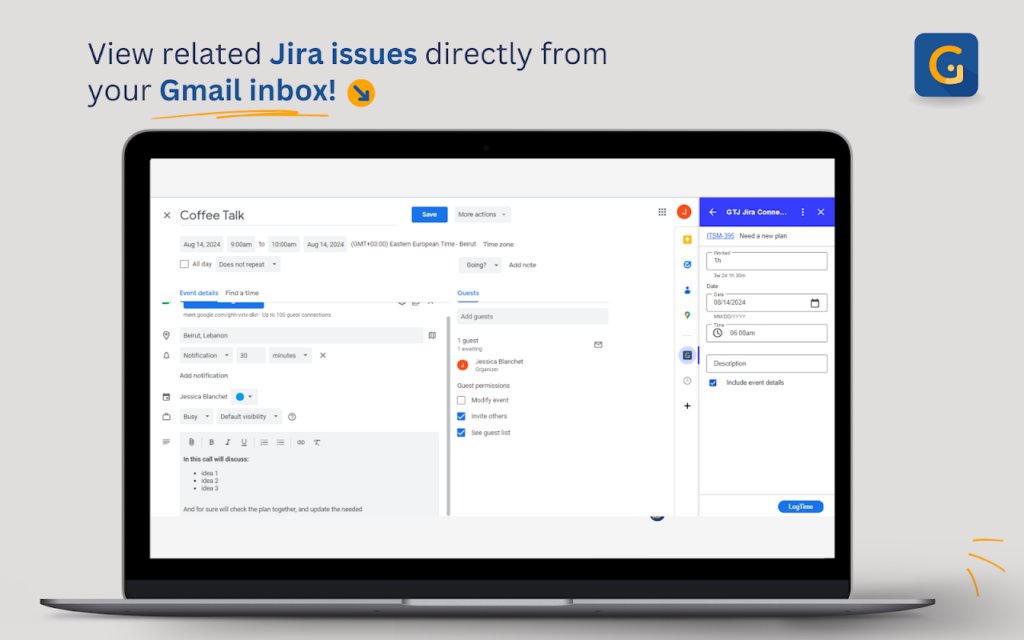
3. Using Jira’s Incoming Mail Server Configuration
You can configure Jira to create issues from emails.
- Admin Access: Ensure you have administrator permissions in Jira.
- Set up OAuth 2.0: Since basic authentication is being phased out, configure OAuth 2.0 for your Gmail account in the Google API Console.
Next, add incoming mail server and configure mail handler:
- Go to Jira Administration > System > Incoming Mail.
- Click on Add Incoming Mail Server.
- Fill out the required fields, including server name and description.
- Choose OAuth as your authentication method and sign in with your Gmail credentials.
Configure Mail Handlers: Set up mail handlers in Jira to determine how incoming emails will be processed (e.g., creating issues or comments).
4. Using Automation Tools like Zapier
For those who prefer no-code solutions, using automation platforms like Zapier can be useful:
- Create a Zap: Sign up for a Zapier account if you don’t have one.
- Select Gmail as the trigger app (e.g., receiving a new email).
- Choose Jira as the action app (e.g., creating a new issue).
Customize your workflow: Follow the prompts to customize how information flows between Gmail and Jira. This setup allows for various automated tasks without coding.
Integrate Jira + Gmail using Hiver
Hiver is a customer service platform built for teams using Gmail. It enables you to manage shared inboxes like [email protected] directly from your Gmail inbox, eliminating the need to switch between different applications, similar to how you can streamline workflows with WhatsApp Gmail integration. With the Jira integration, teams can create and track Jira issues right from your email, making collaboration between support and development teams seamless.
Why go for this integration?
- Create Jira issues from Gmail: Turn customer emails into Jira issues without leaving your inbox.
- Real-time updates: Any changes made to issues in Jira are instantly visible in Gmail.
- Collaboration: Facilitate better communication between support and engineering teams.
- Stay organized: Keep track of all customer queries and their status in one place.
- Improve response times: Quickly address customer issues by streamlining your workflow.
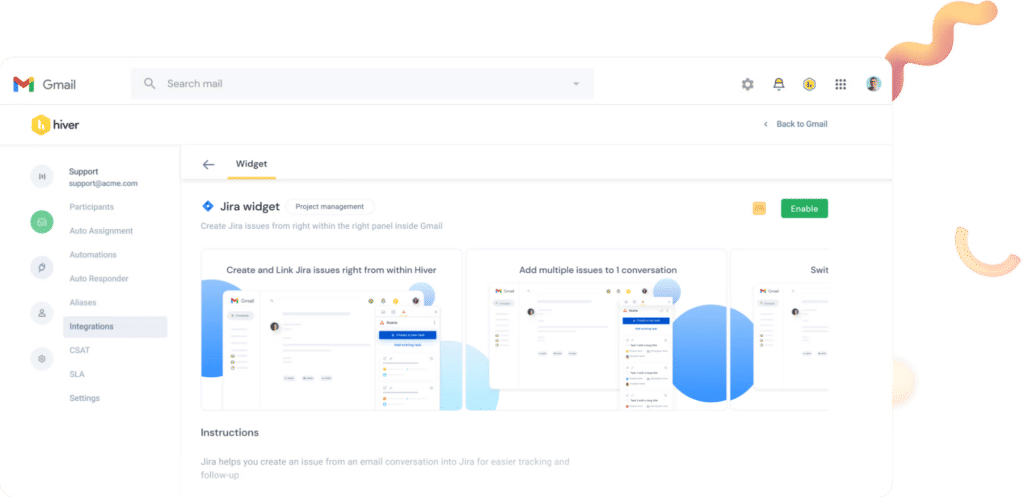
How to set up Hiver-Jira integration
Here’s how you can integrate Jira with Gmail using Hiver:
- Visit the Hiver Jira Integration page.
- Click on “Get Started” or “Try for Free” to create an account.
- Sign up using your Google Workspace (formerly G Suite) account.
- Install the Hiver Chrome extension.
- Click on the Hiver icon to open the dashboard.
- Go to the “Admin Panel” located in the sidebar.
- Select “Integrations” from the menu options.
Connect Jira to Hiver
- In the Integrations section, find “Jira”.
- Click on “Connect” next to the Jira option.
- A new window will prompt you to authorize the connection.
- Log in to your Jira account when prompted.
- Allow Hiver the necessary permissions to access your Jira projects and issues.
- This step ensures that Hiver can create and update issues in Jira on your behalf.
Configure Integration Settings
- After connecting, you’ll get the option to configure settings.
- Choose which Jira projects you want to link with Hiver.
- Select default issue types, priorities, and other fields.
- Save your settings to complete the integration.
Using the Hiver-Jira Integration
Now that you’ve set up the integration, here’s how to make the most of it:
Creating Jira issues from emails
- Open an email that requires action from your development team.
- In the Hiver sidebar within Gmail, click on “Create Jira Issue”.
- A form will pop up with fields like Project, Issue Type, Summary, and Description.
- The email’s subject and body are automatically filled in as the issue’s summary and description, but you can edit them if needed.
- Add any additional details and click “Create” to send the issue to Jira.
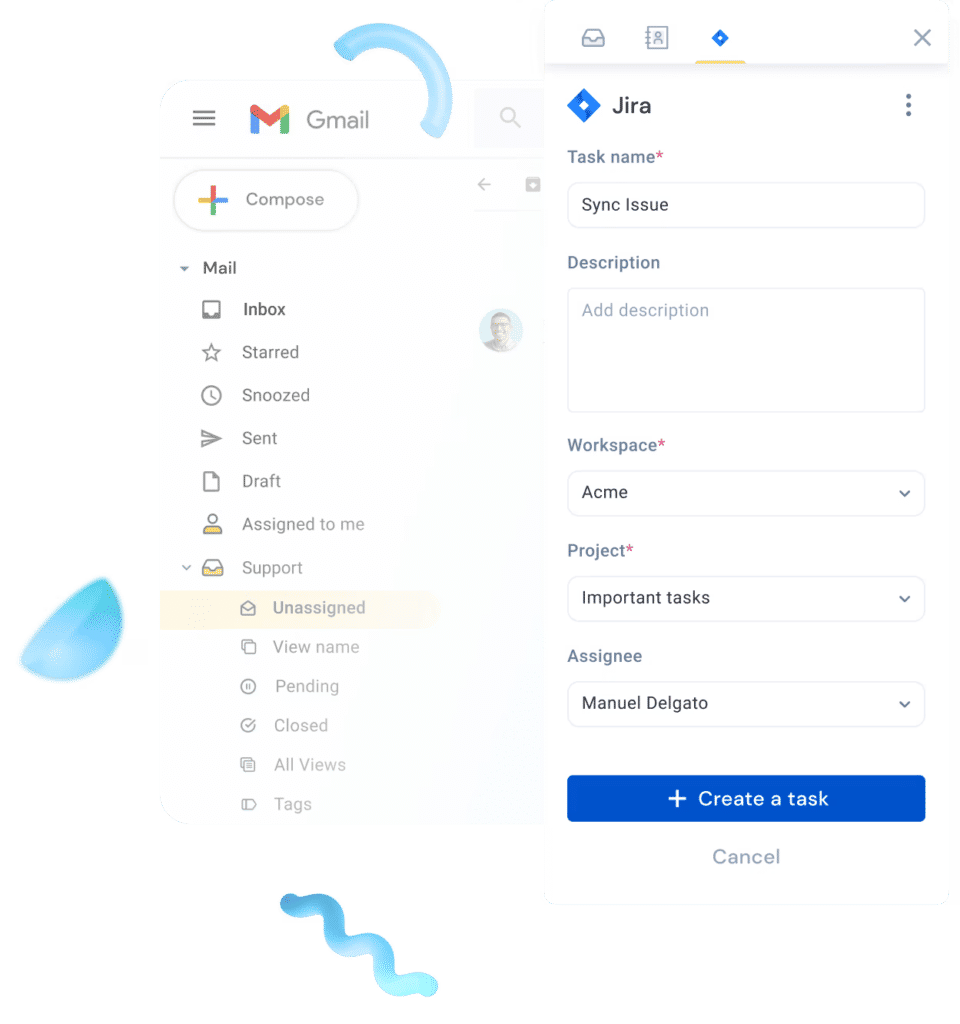
Tracking issue status
- When you open an email linked to a Jira issue, you can see the issue’s status in the Hiver sidebar.
- Updates made in Jira, such as status changes or new comments, are visible in Gmail. This keeps your support team informed without needing to switch to Jira separately.
Collaborating with team members
- Hiver can help you assign email queries to specific team members. This helps drive accountability across the team.
- Add internal notes or comments that are visible to your team but not to the customer.
- Tag colleagues to draw their attention to specific issues.
The best part is: Hiver offers a free forever plan.
“Hiver plugs into Gmail; so hardly any training needed. We are small and do need a ton of features in a help desk solution like Jira. The tagging and statusing features are simple but work well!” – Hiver user | G2 review
FAQs (Frequently Asked Questions)
1. Can I create multiple Jira issues from a single email?
Yes, most of the integration methods allow you to create multiple Jira issues from a single email, especially if the content suggests multiple tasks or requests.
2. What happens if an email doesn’t fit the predefined criteria for issue creation?
If an email doesn’t meet the criteria set for automatic issue creation in Jira, it will typically remain in your inbox. In such cases, you can manually create a ticket.
3. How secure is the data shared between Gmail and Jira?
Data security largely depends on the kind of integration you configure. Most reputable tools comply with data protection regulations and employ encryption to safeguard your information.
4. Is there a limit to how many emails I can convert into Jira issues?
While many tools do not impose strict limits, performance may vary based on your account type and the specific integration tool used. It’s best to check the documentation for any restrictions.
5. Can I customize the Jira fields that are populated from Gmail?
Yes, you can customize which form fields are entered during the issue creation process. This allows you to tailor the integration to better fit your team’s workflow and requirements.
6. What are the limitations of the Jira-Gmail integration add-on?
Some limitations may include restrictions on the types of attachments that can be included, potential issues with formatting when transferring email content, and dependency on internet connectivity for real-time updates. Additionally, there might be limits on the number of issues that can be created from a single email.
7. How does the integration handle attachments from Gmail?
The integration allows you to include attachments from Gmail when creating Jira issues. You can easily attach files directly to the task without needing to download them first.
8. Are there any performance issues when using the Jira-Gmail integration?
Generally, there should not be significant performance issues when using the integration. However, it may depend on your internet connection and the volume of emails being processed.
9. What features does Hiver offer for integrating with Jira?
Hiver allows users to convert emails into Jira issues directly from Gmail, comment on existing tickets, track status of issues, and manage attachments all within the Gmail interface. This helps maintain a seamless workflow without having to switch between applications.
10. Can I automate issue creation with Hiver’s Jira integration?
Yes, Hiver enables users to set up rules that enable them to automatically create issues in Jira based on specific criteria – sender name or specific keyword in email body – in incoming emails.
11. How do I manage comments on Jira issues through Hiver?
Users can add comments to existing Jira issues directly from the Gmail interface using Hiver. This ensures that all relevant discussions are organized within email threads.
Make the Most of Jira Integration with Gmail for Seamless Task Management
Integrating Jira with Gmail can really change the way your team handles tasks and communication surrounding these tasks.
To get the most out of this integration, it’s helpful to set clear guidelines for creating issues and taking advantage of automation features. This way, everyone knows what to do, and you can save time on repetitive tasks.
As you start using these tools, monitor your progress and ask your team for feedback. This will help you make adjustments and improve collaboration. With the right setup and a little practice, project management will become smoother.
Hiver adds another layer to this integration by allowing you to convert customer support emails into Jira issues directly from Gmail. You can comment on existing tickets and track their status without leaving your inbox, making it easier to manage customer queries alongside your project tasks.
So why not give it a try? Free for 7 days.











